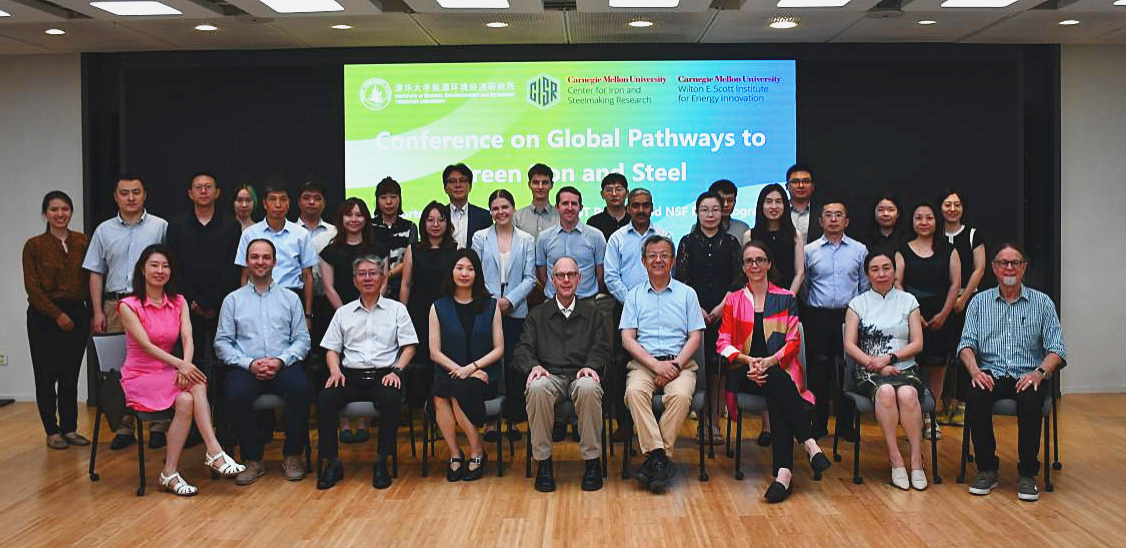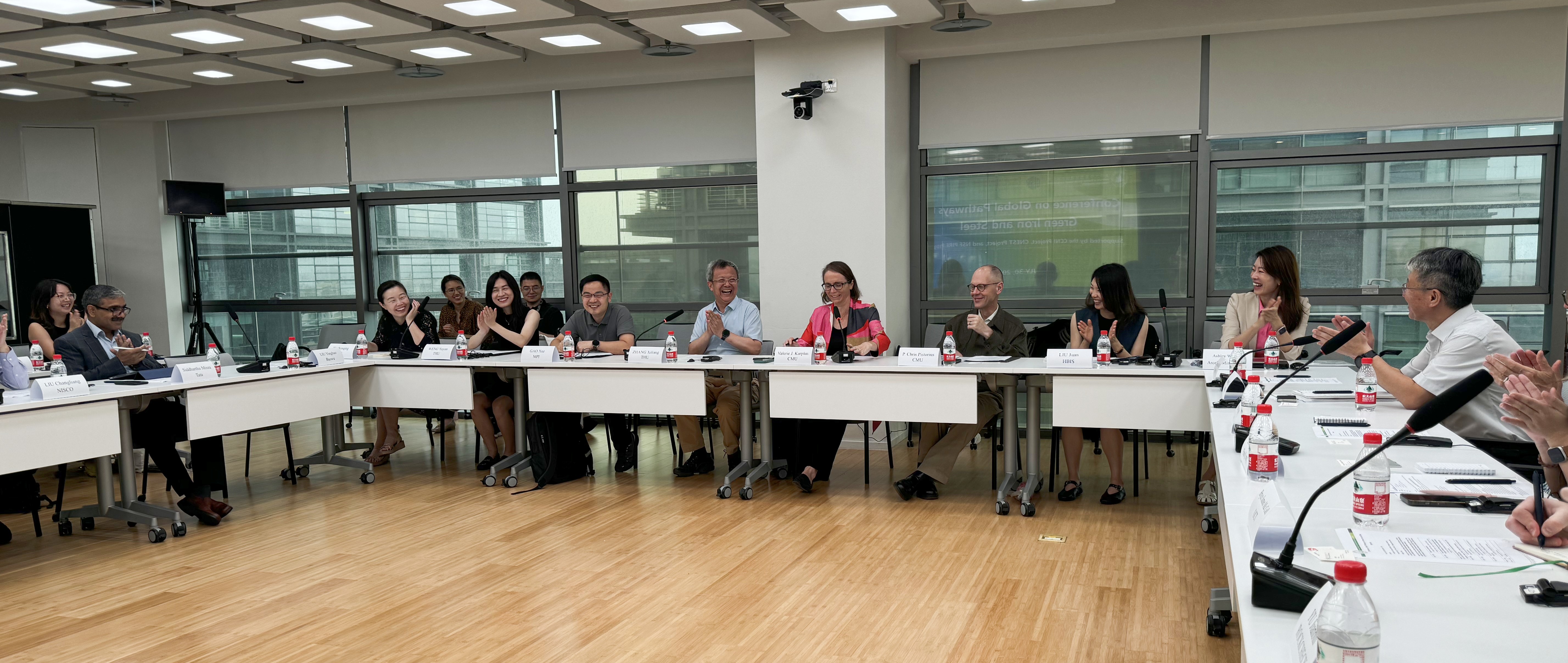The "Global Pathways to Green Iron and Steel" seminar, a collaborative effort between Tsinghua University's Institute of Energy, Environment and Economy(3E) and Carnegie Mellon University's Wilton E. Scott Institute for Energy Innovation, was successfully held on July 30th in Beijing. The event attracted over 40 experts, scholars, and corporate representatives to engage in discussions on green steel technologies, policies, and corporate practices. The seminar was supported by the China Carbon Neutrality Initiative (CCNI), the Carbon Neutrality and Energy System Transformation (CNEST) project, and the Partnerships for International Research and Education (PIRE) program.

In the opening session, Professor Zhang Xiliang, Director of 3E, highlighted the significance of the iron and steel industry, which is a key pillar of socio-economic development and at the same time also a major consumer of energy and emitter of carbon. He believed that developing green steel will help enhance product competitiveness, promote sustainable industry growth, and accelerate global low-carbon transformation. Professor Valerie J. Karplus, Deputy Director of the Wilton E. Scott Institute, presented INDABA, a global cooperative project that her institute is leading, which involves four countries, five universities, and various industries. The green steel taskforce of INDABA aims to explore the pathways and enabling mechanisms for realizing the net-zero transformation of the global iron and steel industry. With China being a major steel producer, Karplus expressed hopes for in-depth cooperation with Tsinghua University to accelerate the industry's decarbonization in an economically viable and equitable manner.
Gao Xue, Deputy Chief Engineer of the China Metallurgical Industry Planning and Research Institute, introduced China's energy conservation and carbon reduction policies for the steel industry, as well as development recommendations. He outlined a two-phase approach for the industry's energy conservation and carbon reduction efforts, focusing initially on energy efficiency and cost savings, followed by integrated short, medium, and long-term planning to realize the "dual-carbon" goals.
The seminar was structured into four sessions. The first session, chaired by Professor Karplus, focused on cutting-edge decarbonization technologies in the iron and steel industry. Liu Juan, Chief Expert of HBIS Group's Sustainable Development Research Center, shared HBIS' low-carbon practices and the HyMEX demonstration project. Xu Wenqing, a researcher from the Institute of Process Engineering, Chinese Academy of Sciences, discussed the progress and prospects of CCUS technology in China's iron and steel industry, while Professor P. Chris Pistorius of Carnegie Mellon University examined the impact of slag volume in electric furnace steelmaking.
The second session, moderated by Assistant Researcher Weng Yuyan from 3E, delved into the low-carbon policies for iron and steel industry in China and globally. Liu Yinghao from China Baowu Steel Group provided an update on the standards and progress of low-carbon emission steelmaking in China. Researchers from the University of Cape Town shared their perspectives on the low-carbon transformation path for the South African steel industry.
The third session, led by Professor Pistorius, featured strategies and plans of global steel companies for further decarbonization. Representatives from ArcelorMittal, Nanjing Iron & Steel Group, POSCO, SMS Group, Tata Steel, GEELY Automobile, and Hang Lung Properties joined this panel discussion.
The fourth session, chaired by Professor Zhang, focused on technological pathways for global iron and steel industry decarbonization. Li Menglong from HBIS Group outlined the technological pathways for low-carbon emission steelmaking of HBIS, while Professor Karplus shared INDABA's findings from green steel researches and its future research plan.
In closing, Professor Karplus and Professor Zhang acknowledged the valuable information, knowledge, and insights from participating experts. They believed that the new ideas and emerging technologies shared would inspire the global iron and steel industry to further expand practices in green development.
